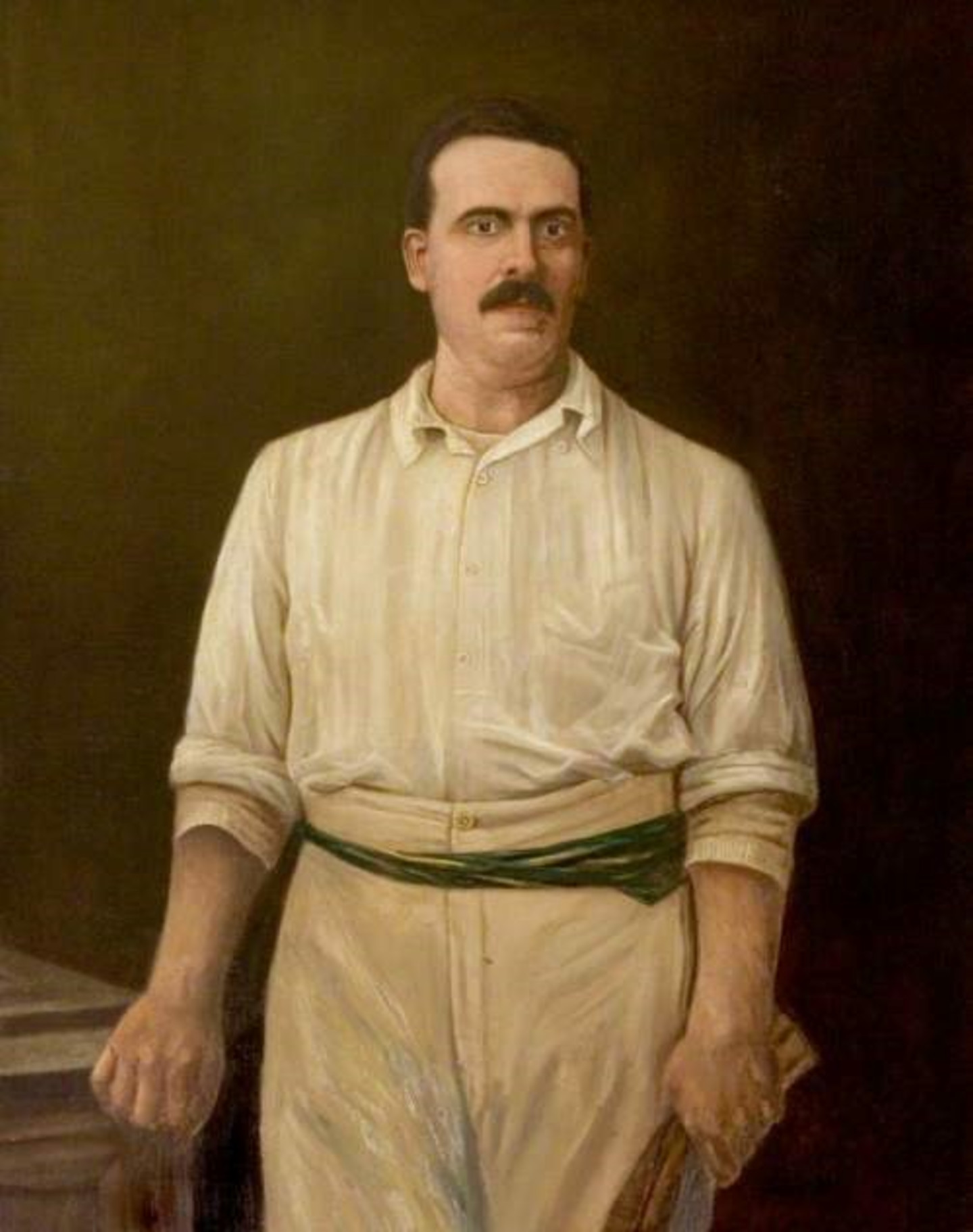Born in Greasley on 26 February 1851, Mordecai Sherwin moved to Cinderhill early in his life and made his Notts debut at the age of 25. In a Notts career spanning 20 years he claimed 500 dismissals (387 catches and 113 stumpings) in 206 first-class games; only five keepers have taken more dismissals for the county than Sherwin.
The death of Sam Biddulph in the winter of 1876 created an unexpected vacancy behind the stumps and Sherwin, a local cricketer for Basford Park CC, was brought in towards the end of that summer, making his debut against Gloucestershire at Clifton College and appearing in four matches. Although recognised as the better keeper, Sherwin was kept out of the Notts XI by Fred Wyld, eventually securing a regular place in July 1880.
The rotund Sherwin, who stood 5 ft 9 in, increased his weight over the years reaching over 17 stone, however WG Grace stated that Sherwin was ‘as nimble and sharp as cat’. He was excellent down the leg-side and often stood up to the stumps to the fastest of bowling. He played three times for England, two in the Australian tour organised by Shaw and Shrewsbury in 1886/7 and at Lord’s 1888.
Sherwin’s playing days coincided with Nottinghamshire’s greatest years. He was an ever-present in the championship team of 1884 and took over the captaincy for two seasons in 1887 when Shrewsbury declined the post. He led the side on 35 occasions. He was the last appointed professional captain of Notts until John Clay in 1961.
In 1887, he became the first Notts keeper to take 50 dismissals in a season. Two seasons later he dismissed eight Gloucestershire batsmen (5 ct, 3 st) in a match at Trent Bridge. Sherwin remained a regular choice until the end of the 1893 season. He made his last appearance in his benefit match versus Cambridge University at Trent Bridge in 1896. Unfortunately, Sherwin received nothing from the gate, for the match proved no interest to the public.
Batting at either ten or eleven throughout his career he scored 1,444 runs for Notts with a top score of 35 v Surrey at The Oval in 1885 where he added 58 for the last wicket with William Gunn. Sherwin twice forsook the gloves and captured valuable wickets, taking 2 for seven versus Kent at Trent Bridge in 1888. In 1892, Notts needed five Middlesex wickets to win at Lord’s with 30 minutes to play. Sherwin took 2 for 9 off 7 five-ball overs as Notts won with 4 minutes to spare. In 1877, Sherwin joined the staff at Lord’s, a post he retained until the close of 1902.
In addition to his prowess at cricket, Sherwin was from 1883 to 1888 a goalkeeper for Notts County, appearing in the inaugural Football League season. He was also a first-class umpire standing in 117 matches; including the first ever test at Trent Bridge in 1899 versus Australia,
Sherwin, who had been landlord of a number of Nottingham public houses, died at The Craven Arms, Woodborough Road, Nottingham at the age of 59 on 3 July 1910. An imposing portrait of Sherwin hangs up in the Long Room at Trent Bridge. Sherwin is also thought by some to have lent his name to former first-class cricketer Arthur Conan Doyle’s famous detective, in combination with his Nottinghamshire colleague Frank Shacklock.
In 1891, Sherwin was chosen as one of the five Cricketers of the Year by Wisden; the famous almanack choosing five keepers that summer. They stated that “Sherwin is one of the cheeriest and pluckiest of cricketers. In point of style behind the wicket he is more demonstrative than his Lancashire rival [Pilling], but, though the applause and laughter of the spectators may occasionally cause him to go a little too far, he has certainly never done anything to really lay him open to censure.”
Sherwin was a leading member, along with Notts team mate William Gunn, of the Nottingham Glee Club that used to sing at the Black Boy Hotel. His grandson William H. Sherwin was at one time a member of the Notts CCC committee and a Director of Gunn and Moore Limited.
March 2020
Nottinghamshire First-Class Number: 151
